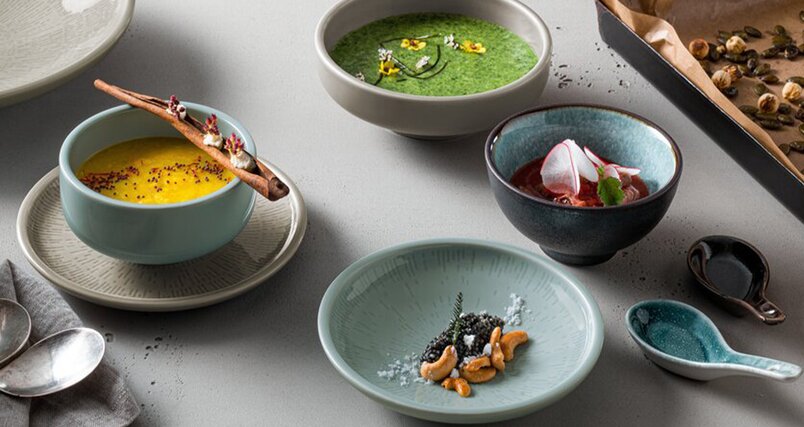Flowers are always a welcome surprise. Even more so when you find them on the plate in a restaurant. In fact, there is a whole range of edible flowers that can be used in the kitchen. Many of them fulfill more than just the function of an eye-catcher and decorative element. Some edible flowers contribute special aromas that give dishes a whole new flavor nuance.
The most popular edible flowers
The most commonly used flowers in the kitchen include the following:
Zucchini flowers: Not only the zucchinis themselves, but also their flowers are edible. They are tender and have a mild flavor. They can be stuffed and fried to create delicious starters or side dishes. They also cut a fine figure in salads or as a garnish on pasta dishes.
Violets: The pretty violet flowers are perfect for decorating desserts such as cakes, cupcakes or puddings. They not only give the sweet treats a beautiful color, but also a subtle, floral taste.
Daisies: Daisies are not only eye-catching in the garden, but also on the plate as edible flowers. They can be used fresh in salads or to decorate soups and quiches.
Lucky clover: The flowers of lucky clover are a wonderful addition to salads or cold starters. They add a fresh touch to dishes and also look enchanting.
Marigolds: Marigolds are not only suitable as a medicinal plant, but also as edible flowers in various dishes thanks to their slightly spicy taste. They can be dried and used as a spice in soups, stews or risotto. Served fresh, they are a colorful eye-catcher, for example on salads.
Cornflower: The intense blue color of cornflowers makes these edible flowers a popular decorative element for salads, desserts or cocktails. They also provide a nice surprise effect when frozen in ice cubes.
Forget-me-nots: Forget-me-nots make wonderful edible decorations for pastries, cakes or salads. Although they don't have much flavor of their own, they are a wonderful eye-catcher on dishes.
Sage: Sage flowers are edible and have an intense flavor. This makes them ideal for garnishing meat dishes or for making sage butter. They can also be dried and used as a spice.
Apple blossoms: Apple blossoms are not only beautiful to look at, but also have a delicate, slightly sweet taste. They can be used as an edible decoration for fruit salads, desserts or cocktails.
Sunflowers: The petals of sunflowers are not only decorative, but also have an interesting, slightly nutty flavor. They are ideal as an ingredient in salads or as a garnish for soups.
Roses: Rose petals are probably the best known edible flowers and have long been used in the kitchen. They can be used to make rose water, rose oil or as decoration for desserts and drinks.
Nasturtium: The flowers of the nasturtium have a spicy taste and are ideal for making pesto or as an ingredient in salads. They give dishes a spicy note and a bright orange color.
Dandelion: The yellow flowers of the dandelion are not only pretty, but also rich in vitamins and minerals. They can be made into syrup or jelly or used as an edible decoration for salads and desserts.
Borage: The star-shaped flowers of borage have a light cucumber flavor and are ideal for garnishing soups, salads or drinks. They can also be frozen into ice cubes to create a truly refreshing effect for guests.
Floral plates: traditional and modern at the same time
Flowers in gastronomy therefore have both a culinary and a decorative purpose. They can also be used as decoration on tableware to visually emphasize exceptional delights. It is no coincidence that floral decorations on porcelain have a long tradition. The reason is probably that nature motifs evoke beautiful memories in almost every viewer. A perfect example of this is the CREATE collection from SCHÖNWALD with the FLORAL CHARM designs in blue or green.
The floral motifs are reinterpreted here, giving the items a romantic, playful yet "grown-up" look. This is particularly evident in the blue and white floral tableware in the collection: this pattern is extremely traditional, but looks surprisingly modern in CREATE and brings freshness and vibrancy to the table. The highlight: each item has a different design – either all over or on the edge.










